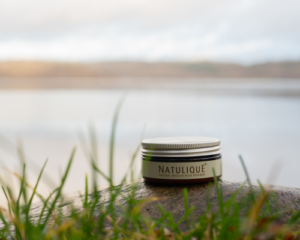When you embark on a new hair coloring adventure, you may be confronted with unwanted highlights that don't quite match your expectations. Understanding where these unexpected shades come from is essential to avoiding or correcting them effectively. In this article, we'll explore the phenomenon of unwanted highlights after coloring, their causes, and the types of highlights that can be encountered.
Understanding the phenomenon of unwanted highlights after coloring
Causes of unwanted reflections
The influence of the initial dye used
The quality and type of dye applied play a crucial role in the final result. Low-end or poorly formulated dyes can alter the tone of your initial color. It's essential to choose a dye that suits your hair type and natural color to minimize unwanted highlights.
The impact of sun exposure and other environmental factors
The sun can affect the color of your hair by degrading the pigments in the dye. UV rays can cause coppery or yellowish highlights to appear. Exposure to chlorinated water or pollution can also alter color and create undesirable highlights.
Types of unwanted reflections
Red or copper highlights
These highlights are often the result of incomplete oxidation of the dye. The initial dye may contain red or copper undertones that have not been neutralized. The use of color-correcting products such as blue shampoos can help reduce these highlights.
Greenish highlights
This phenomenon is common when blond or light-colored hair is exposed to chlorinated water, such as in swimming pools. To alleviate this problem, we recommend using clarifying shampoos after exposure to chlorine to eliminate chemical residues.
Orange or yellowish highlights
These highlights often appear on blond or lightened hair. They can be the result of a poor color combination or pigment degradation by environmental agents. Violet shampoos are particularly effective in neutralizing unwanted yellow tones.
Understanding the source of unwanted highlights after coloring is an essential first step in finding suitable solutions and preventing these undesirable color contrasts. The use of appropriate products and methods will therefore largely depend on the causes identified and the types of highlights encountered.

Preventive methods to avoid unwanted reflections
The choice of color
Selection criteria for good hair color
- Product quality : Opt for quality colorants from recognized brands to guarantee long-lasting results without unwanted highlights.
- Composition: Ammonia-free colorants or those with integrated hair care agents prevent hair dehydration and minimize unwanted effects.
- Compatibility : Choose a product that suits your hair type and natural shade. Professional advice can be invaluable for an accurate diagnosis.
The benefits of semi-permanent coloring
- Less aggressive : Semi-permanent hair color does not penetrate deep into the hair fiber, reducing the risk of altering natural color.
- Natural evolution : Since it does not leave strongly visible roots, it allows color to evolve more naturally, minimizing undesirable contrasts.
- Ideal for testing : If you'd like to try out a new shade, semi-permanence offers the possibility of testing without any long-term commitment or significant impact on the base color.
Pre-color hair care
The importance of healthy hair before coloring
- Hydration : Before coloring, make sure your hair is well moisturized. Use nourishing and moisturizing masks to optimize your hair's condition.
- Avoid chemical treatments: Limit the use of harsh chemicals on your hair before coloring to reduce the risk of damage and unwanted highlights.
- Cutting the tips : Getting rid of damaged ends before coloring can prevent colors from clinging unevenly, creating unwanted highlights.
Scalp preparations and treatments
- Cleaning : It is advisable to gently cleanse the scalp before coloring to remove any residues that could affect the uniformity of the dye.
- Protection : Applying a light protective film to the scalp can prevent irritation and ensure more even color application.
- Use of pre-color care products: Specific products are available to prepare the scalp and hair, improving color absorption and intensity.
Adopting these preventive methods will not only help you achieve the color you want, but also maintain the health of your hair and prevent the appearance of unwanted highlights. It's crucial to combine the right technique and care for optimal results and radiant hair. With the right selection criteria and rigorous pre-color care, you'll be able to maintain the desired appearance of your hair color.
See also: How to add volume with a hair wax?
Solutions for eliminating unwanted highlights after coloring
The use of specialized products
Dejaunizing shampoos and conditioners
- Reflection neutralization : Dejaunizing shampoos and conditioners, often formulated with violet pigments, are designed to neutralize unwanted yellow or copper highlights. Regular use helps maintain a more natural, vivid color.
- Regular application: For optimum results, we recommend incorporating these products into your weekly hair routine. However, excessive use can dry out hair, so alternating with moisturizing products is recommended.
- Match your color : Choose a product suited to your hair color. For example, formulas containing blue pigments are ideal for countering orange highlights in brunette hair.
Corrective hair masks
- Hydration and color correction : Corrective masks enriched with targeted pigments offer dual action: they correct unwanted highlights while providing hair with intense nutrition.
- Customized choice : Select a mask that specifically targets your glare problem. Masks with green pigments can help neutralize red or copper highlights.
- Laying time : Respect the exposure time indicated on the product to avoid color saturation or unexpected highlights.
Appropriate hair care techniques
Rinsing with vinegar water
- Mild acidification : Cider vinegar is a natural ally for rebalancing the scalp's pH and closing hair cuticles, thus reducing the appearance of unwanted highlights.
- Natural gloss : Using a dilution of cider vinegar in warm water for the last rinse can restore shine and suppleness to your hair, while reducing unwanted tones.
Use of hair oils
- Intense hydration : Oils such as coconut or argan oil deeply nourish hair, improving texture and reducing highlights caused by dryness.
- Target application: Apply the oil to lengths and ends to prevent unwanted highlights while treating damaged, fragile hair.
Calling in a professional
In-salon consultation and treatment
- Expert appraisal : A professional hairdresser can assess the condition of your hair and suggest appropriate solutions, from color correction treatments to deep conditioning.
- Professional techniques : Opting for advanced salon techniques, such as gloss or toner coloring, can refine your color and eliminate unwanted highlights.
- Personalized advice : Receiving advice on the right skincare routine after a treatment can prolong salon results and minimize future reflections.
By integrating appropriate solutions, tailored to your specific needs, you can transform your hair experience and maintain harmonious color while preserving the health of your hair. Striking the right balance between specialized products and professional care is an invaluable asset in the quest for impeccable color.
Taking care of your color every day
Adopt a made-to-measure hair routine
Use of mild shampoos
To preserve your color and avoid the appearance of unwanted highlights, it's crucial to use gentle, sulfate-free shampoos. These products respect the scalp and hair fiber, promoting color longevity and the stability of applied pigments.
Constant hydration
Well-moisturized hair is less prone to unwanted highlights. Incorporate moisturizing products such as conditioners enriched with keratin or silk proteins into your routine. These products close the hair cuticles, preventing color pigments from escaping.
Protect your hair from the elements
Avoid excessive sun exposure
UV rays can alter your hair color and intensify unwanted highlights. Consider wearing a hat or using a styling product with built-in sun protection to preserve your color on sunny days.
Rinse with fresh water
Opt for a cool-water rinse rather than a hot-water rinse. Cool water helps keep the hair cuticle closed, preventing color bleeding and the undesirable highlights that can result.
Colouring frequency
Avoid coloring too close together
Leaving enough time between colorings allows hair to recover and reduces the risk of unwanted highlights. Ideally, you should wait at least 6 to 8 weeks, to preserve hair health and color uniformity.
Try targeted touch-ups
To avoid recoloring the entire head of hair, opt for touch-ups only on the roots or areas where color is fading. This minimizes the hair's over-exposure to chemicals, preserving its quality and hue.
FAQ
- Why does my hair color change over time?
Over time, environmental factors and inappropriate care can degrade color pigments, leading to undesirable highlights.
- Which ingredients to avoid in hair care products to preserve color?
Avoid products containing sulfates and alcohol, as they can dry out hair and accelerate color fade.
- Are natural skin care products effective in maintaining color?
Yes, some natural ingredients like cider vinegar or coconut oil can help preserve color while maintaining hair health.
- How many times a week should I use a dejaunizing shampoo?
In general, once a week is enough to maintain color and avoid highlights without drying out the hair.
- Is a color change the only solution to unwanted highlights?
No, adjustments and care can often correct unwanted reflections without the need for a complete color change.



